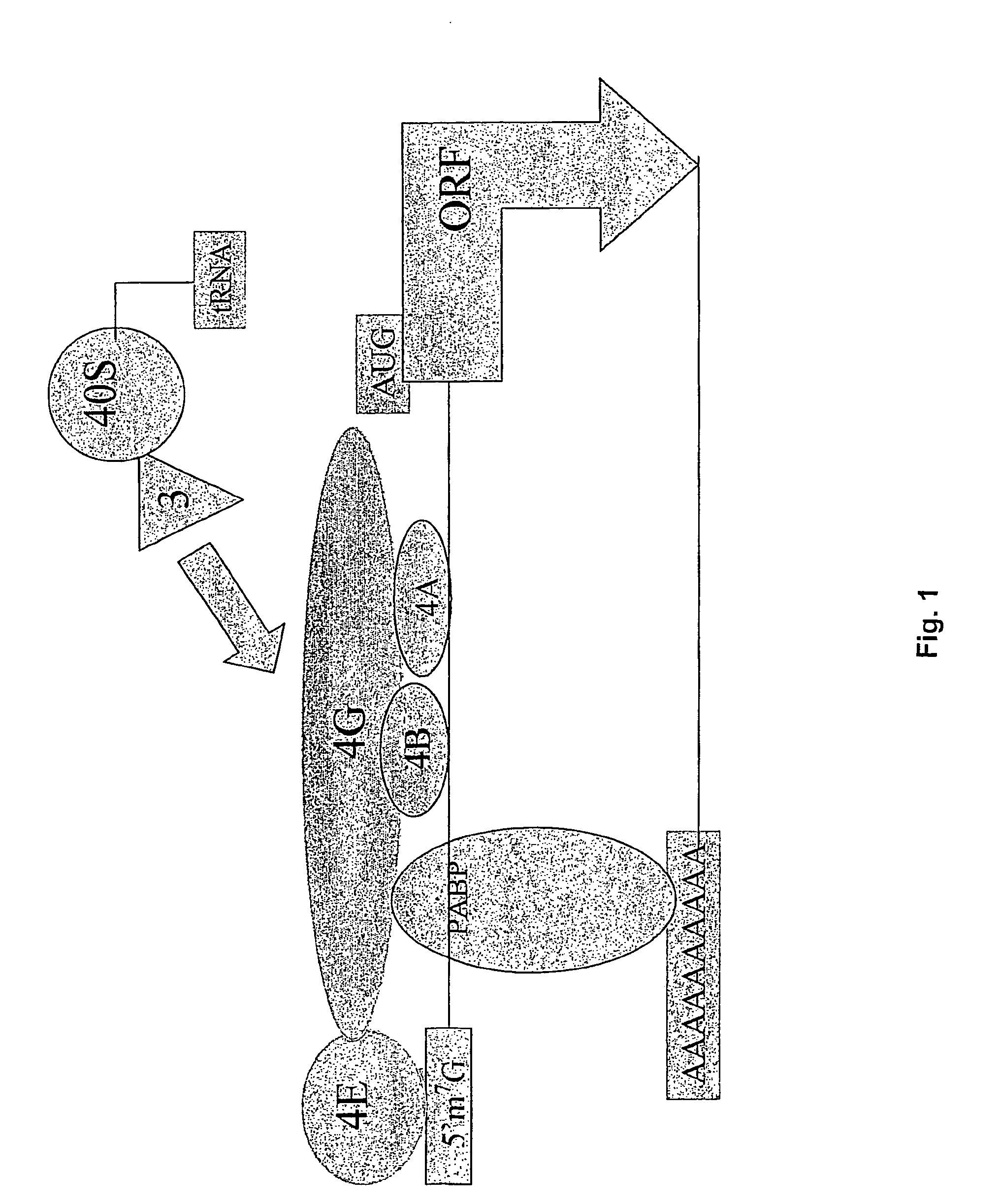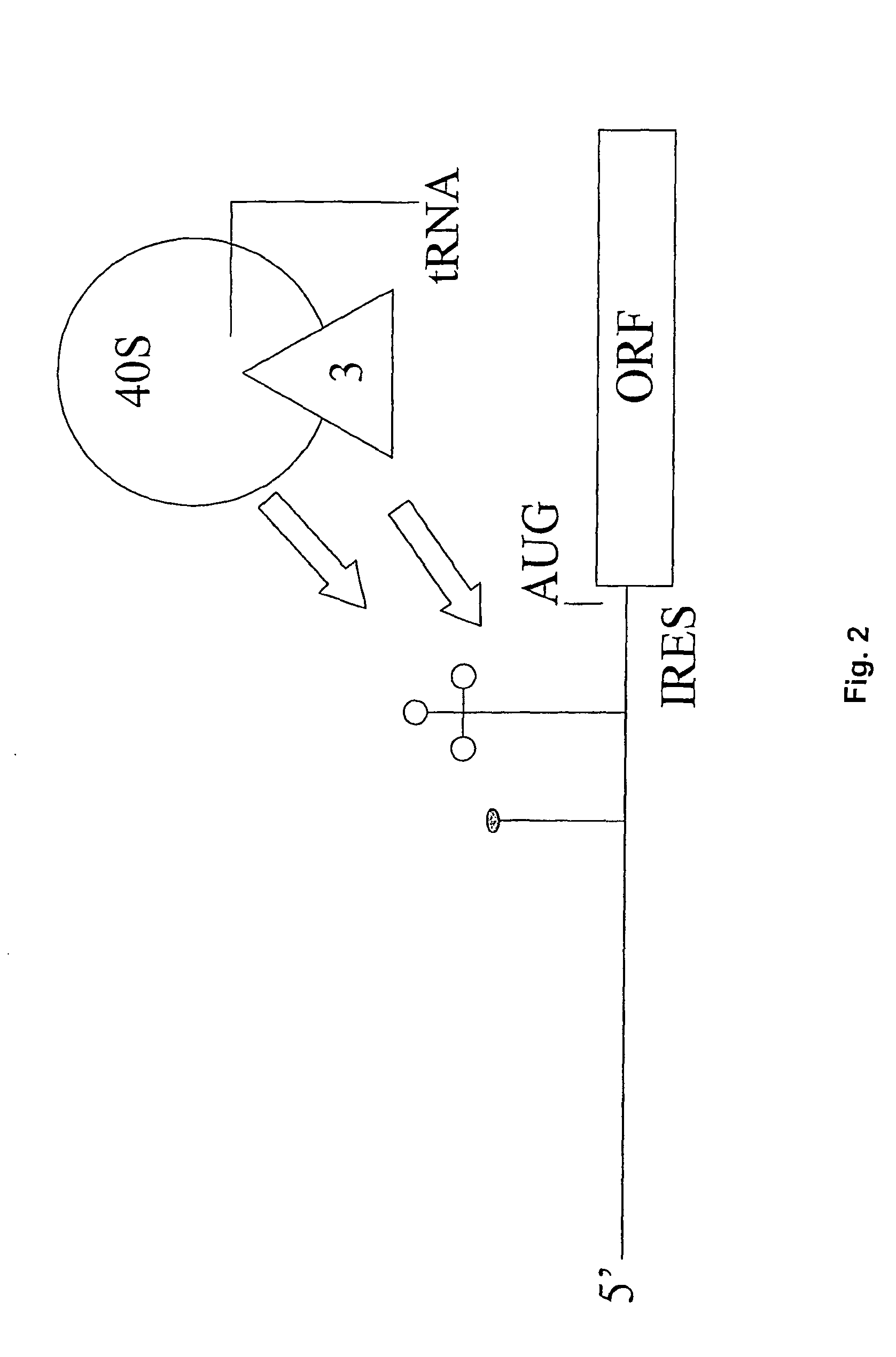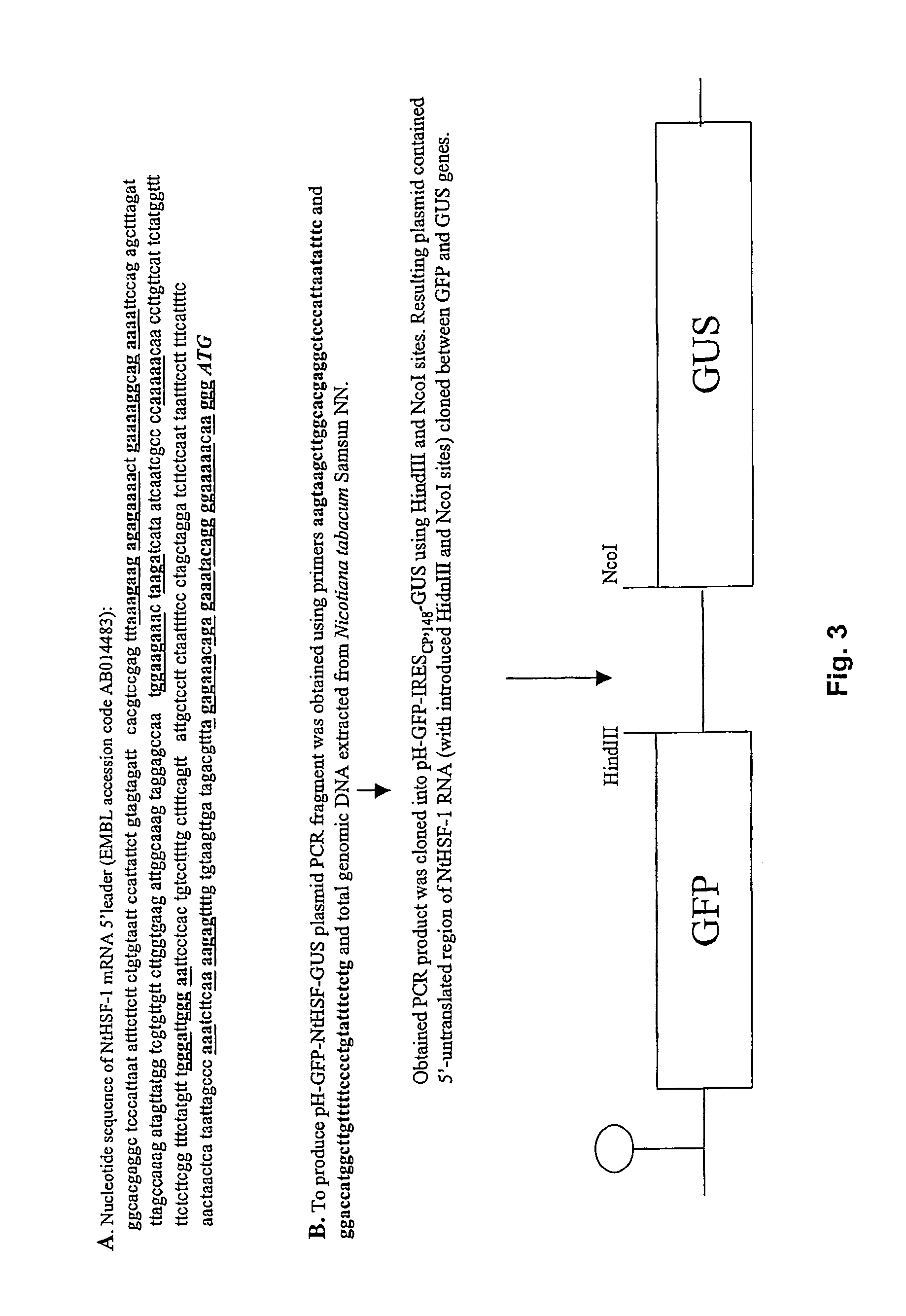Identification of eukaryotic internal ribosome entry site (IRES) elements
a technology of eukaryotic ires and entry site, which is applied in the field of search and identification of novel eukaryotic ires elements, can solve the problems of no invention development approach, no approach to search for new ires elements having cross-kingdom activity, application nor experimental approach nor interpretation of results allows a direct and unambiguous
- Summary
- Abstract
- Description
- Claims
- Application Information
AI Technical Summary
Benefits of technology
Problems solved by technology
Method used
Image
Examples
example 1
Identification of a Novel IRES Sequence Isolated from NtHSF mRNA 5′ UTR
Cloning Strategy
The 5′UTR of NtHSF-1 was selected by screening. It contains adenine-rich nucleotide blocks. It was cloned as outlined in FIG. 3 to produce transcriptional vector pH-GFP-NtHSF-GUS.
[0070]In vitro translational assays: WGE and RRL translation assay were carried out as described in Technical Bulletin No. 165 and No. 126, respectively, from Promega Corporation using the coupled transcription / translation systems of catalogue numbers L4140 and L4610, respectively. Alternatively, a conventional RRL system from Promega, catalogue number L4960 (Technical Manual No. 232) was employed. Linear H-GFP-GUS vectors having potential IRES elements inserted between GFP and GUS were transcribed using the T7 promoter / RNA polymerase system. RNA transcripts were precipitated with LiCl, dissolved in water, reprecipitated with ethanol. RNA concentrations were measured by spectrophotometry and 5 :g of each transcript was ta...
example 2
Identification of a Novel IRES Sequence Isolated from Tobacco Poly(a) Binding Protein mRNA 5′UTR
[0074]An analysis of human and plant mRNA 5′UTR according to the criteria of the invention revealed other sequences with a high chance of having IRES activity (FIGS. 7 and 8). We selected from this list of sequences 5′UTR of tobacco poly(A)-binding protein (PABP) to confirm the efficiency of our methodology of prediction and identification of novel IRES sequences.
Cloning Strategy: The Approach for PABP IRES Isolation is Described in FIG. 9.
[0075]The obtained DNA constructs were linearized with NotI enzyme and transcribed with T7-polymerase. RNA transcripts were precipitated with LiCl, dissolved in water, and reprecipitated with ethanol. RNA concentrations were measured by spectrophotometry and 5 μg of each transcript was taken for 25-μl in vitro translation sample (RRL, Promega).
[0076]The results presented in Table 3 show that the PABP 5′UTR was able to direct efficient GUS gene expressio...
example 3
Identification of a Novel IRES Sequence Isolated from Tobacco 48K MAP Kinase 5′UTR mRNA
[0077]The goal of this example is to confirm the validity of our approach for searching novel plant IRESes. We selected from the list of putative IRESes (FIG. 8) the 5′UTR of tobacco 48K MAP kinase (MAPK) to confirm the efficiency of our methodology of prediction and identification of novel IRES sequences.
Cloning Strategy: The Approach for 48K-MAPK IRES Isolation is Described in FIG. 10.
[0078]The obtained DNA constructs were linearized with NotI enzyme and transcribed with T7-polymerase. RNA transcripts were precipitated with LiCl, dissolved in water, and reprecipitated with ethanol. RNA concentrations were measured by spectrophotometry and 5 μg of each transcript was taken for 25-μl in vitro translation sample (RRL, Promega).
[0079]The results presented in Table 5 show that the 48K-MAPK 5′UTR is capable of directing efficient GUS gene expression in RRL.
[0080]
TABLE 1Virus IRESesIRESVirus typeVirusl...
PUM
| Property | Measurement | Unit |
|---|---|---|
| concentrations | aaaaa | aaaaa |
| affinity | aaaaa | aaaaa |
| length | aaaaa | aaaaa |
Abstract
Description
Claims
Application Information
 Login to View More
Login to View More - R&D
- Intellectual Property
- Life Sciences
- Materials
- Tech Scout
- Unparalleled Data Quality
- Higher Quality Content
- 60% Fewer Hallucinations
Browse by: Latest US Patents, China's latest patents, Technical Efficacy Thesaurus, Application Domain, Technology Topic, Popular Technical Reports.
© 2025 PatSnap. All rights reserved.Legal|Privacy policy|Modern Slavery Act Transparency Statement|Sitemap|About US| Contact US: help@patsnap.com



